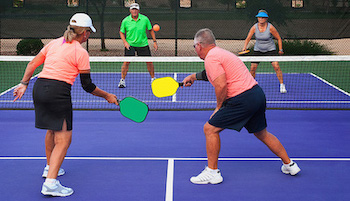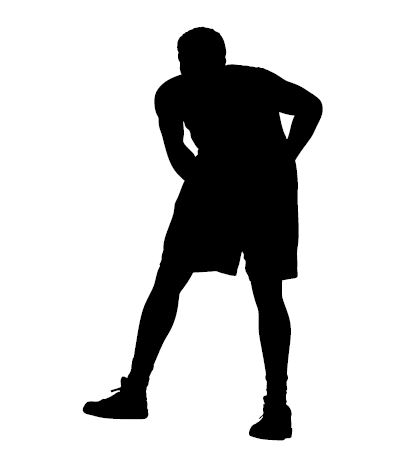Tennis Slang Terms

- Midwesterners are more likely to utter a simple 'jeez' instead of a string of curse words when.
- Origin: The slang term “whip” refers to an expensive car. Thus “feet whips” refers to expensive shoes (the “cars” of your feet). Sneakers: Another word for running shoes, or “trainers” – light weight shoes having rubber soles and designed for casual athetic activity. The term “sneaks” is also used in some places.
For this reason, in today’s article on tennis vocabulary, we’ll be taking a look at some of the most popular tennis scoring terms, so that you can be confident when it comes time to compete against your opponents. At Gorin Tennis Academy, we are the top tennis.
There are a lot of different tennis terms used by tennis players and fans. If you want to be a tennis player then you should be familiar with almost all of these terms!Tennis Terms
Ace
A serve that lands inside the lines and is untouched by the opponent

Advantage
The point that follows a deuce score. If the player wins this point he wins the game, otherwise it goes back to deuce!
Ad-Court
The left side of the tennis court. It is called Ad-Court because the ad points are always played from this side.
Approach Shot
A shot that the player follows to the net is called an approach shot
ATP
The Association of Tennis Professionals (ATP) is the governing body of men’s Tennis!
Backspin
On a shot with backspin the ball rotates backwards. These shots usually stay pretty low
Break
Basketball Slang Terms Shooter
When you win a game during which your opponent was serving that is called a break in Tennis!
Break Point
The receiver is said to have a break point whenever he is in a situation where a point won results in him winning the game off of the server.
Cross-Court
A shot that is hit diagonally into the opponent?s court
Deep

A shot that lands very close to the baseline rather than short around the service line
Deuce
An expression that is used when the actual score is 40-40
Deuce-Court
The right side of the tennis court. It is called Deuce-Court because all deuce points are played from this side
Double Bagel
A match that ends with the score 6-0 6-0 is often called a double bagel in tennis circles. One of the funniest tennis terms in my opinion
Double Fault
The server has two serves to start the point. Whenever he misses both he looses one point in the game and this situation is called a double fault.
Doubles
When you have four players on the court and two are playing against two this is called a doubles match.
Down the Line
A shot that is hit straight along the sideline into the opponent?s court
Error
Any shot in Tennis that does not land within the lines that it is supposed to land within is called an error
Foot Fault
The server is not allowed to move over or even touch the baseline during his service motion. If he does so it is a so-called foot-fault and his serve is considered a fault.
Forced Error
When Player 1 hits a really good shot that forces Player 2 to miss that is called a forced error
Groundstroke
Whenever the ball bounces on your side before you hit it that is called a Groundstroke. Forehands, Backhands, and Slice Backhands are all groundstrokes.
Want To Improve Your Game ?
Sign Up And Get Free Video Tips!
Hold
When you win your service game it is called a hold.
Inside-Out Forehand
Tennis commentators often mention the so-called inside-out forehand. This is a situation where a player hits a forehand, usually from the backhand side of the court, towards the backhand side of his opponent. The ball takes an inside-out swing pattern and therefore the shot is called an inside-out forehand
Kick Serve
A serve hit with lots of topspin. The ball usually jumps high on this kind of shot!
Let
The umpire calls a let whenever a serve touches the net and still lands in the service box. The serve is then replayed
Match Point
When you have match point you only need to win one more point to win and end the entire match.
Mini-Break
If you win a point on your opponents serve during a tiebreak that is called a mini-break
Moonball
A shot hit very high over the net. These are usually defensive shots and many tennis player dislike playing against players that hit moonballs. Just hearing the tennis term “Moonball” can cause some tennis players to get into a bad mood.
Overhead
When you are at the net and your opponent tries to lob you with a high shot you will hit an overhead.
Singles
Whenever two players play a match against each other in tennis it is called a singles match
Smash
Same thing as an overhead.
Tiebreak
A tiebreak is played when the score in a set reaches 6:6. The tiebreak is played up to 7 points and the idea is to bring the set to an end because without a tiebreak it could take forever
Underspin
This is another expression for backspin. The ball rotates backwards and stays low on these shots
Unforced Error
When Player 1 misses an easy shot that is called an unforced error
Volley
Whenever your hit the ball before it bounces on your side it is called a volley
Wild Card
To get into many tournaments you need to have a certain rankings position. If you do not have that position the tournament officials can award you a wild card. With a wild card young players can often enter pro tournaments that they usually could not enter according to the ranking system
So that’s it for the tennis terms explanations. If you think a tennis term is missing then feel free to send me an email and I will include it!
These tennis players terms and jargon are part of sports gamerisms, Define Your Game!Tennis, part 2 continues for tennis players and fans who dream of Aces.
Tennis Players Terms: D
- Daisy Cutter: jargon for a low shot with backspin resulting in a low bounce.
- Dead Net: the accidental shot that hits the net and falls into the opponent's side of the court. Betcha, can't do that again!
- Default: the loss of a match by disqualification after four code violations have been awarded.
- Defensive Lob: term for a high shot at or close to the net.
- Defensive Volley: return tennis shot generally from below the top of the net.
- Deuce: occurs when both players have accumulated a count of 40 or three points each. Either player must attain 2 points in a row to win the match after Deuce.
- Deuce Court: location to the receiver's right service court where a serve is received following a deuce score.
- Dink: lingo for a shot hit with very little velocity.
- Dirtballer: slang for someone who is a clay court player.
- Double Fault: player action that has failed to produce a valid serve twice.
- Double Hit: occurs when the ball is struck twice during a single hit resulting in the loss of a point.
- Doubles: a game played with two players on each side and using the full court.
- Doubles Court: term for the playing area for a doubles match.
- Down the Line: jargon for tennis shot from near the sideline.
- Drag Volley: tennis shot with backspin.
- Draw: term for system of player selection and schedule of a tournament.
- Drop Shot: a shot hit easily and placed close to the net, typically when an opponent is caught far from the net near the baseline.
- Drop Volley: jargon for a ball hit before it has bounced.
- Error: a failed shot that results in a lost point.
- Fault: a serve that falls out of bounds.
- Fifteen: count for the first point of a game going to a player or side.
- First Flight: movement of tennis ball from the racket hit until just before it bounces.
- First Service: the first of two attempts by a player to serve the ball in bounds.
- Flat: lingo for a rapid, straight shot without spin. It's a whizzer!
- Follow Through: movement of arm with racket after the ball has been hit.
- Foot Fault: occurs when a player steps on the end line before making contact with the ball during a serve.
- Foot Fault Judge: game official who monitors and calls foot faults.
- Forced Error: a shot that is placed in such a way that it is missed by the opposition.
- Forehand: the act of hitting the ball with the front hand of the racket.
- Forcing Shot: tactic where a player's shot places the opponent on the defensive.
- Forecourt: specific location between the net and service line.
- Forty: count for the third point of a game going to a player or side.
- Frame: term for oval part of the racket that houses the strings.
- Gallery: jargon for game watchers located at the ends and sides of a court.
- Game: tennis match where the winning player or side must accumulate 4 points and lead their opponent by 2 points.
- Game Point: a serve that can decide the outcome of the match with the scoring of one point.
- Game-set-match: statement that a winner has been decided and the match has ended.
- Golden Set: the win of a set without losing a single point. Congrats are in order!
- Grand Slam: four tournaments: Australian, French, U.S. Open and Wimbledon make up the premium championship known as the Grand Slam of tennis.
- Grinding: taking your opponents best shots and running down every one, typically in a frenzied manner while refusing to give up.
- Groundstroke: the act of hitting the ball after it has bounced once in your court.
- Hacker: lingo for a series of swings or shots by a player that appear to be luck more than skill.
- Half Court: term for court area near the service line.
- Half Volley: action occurs when the tennis ball is struck as it hits the court.
- Head: the top portion of the racquet where the strings are found.
- Heavy Ball: jargon for tennis shot hit with topspin.
- Hit on the Rise: term for ball played before reaching the bounce high point.
- Hopper: tennis balls holder.
- In: valid tennis shot landing in the opponent's court.
- Jam: ball hit near the opposing player's body resulting in a weak return.
- Jump Smash: jargon for a player's vigorous hit while jumping into the air. A smooth move!
- Kick Serve: term for robust spinning hit resulting in a change of direction when it lands.
- Kill: lingo for a heavy hit that leaves the opponent unable to reach and play it.
- Lawn Tennis: name for the original tennis game location, played on grass.
- Let: a ball touching the net on the serve but landing in bounds.
- Line Judge: a person with the responsibility of ruling the ball in or out of bounds.
- Lob: a ball hit high in the air into the opponent's court.
- Long: hit that is called out of bounds as it lands beyond the opposing baseline.
- Love: tennis game where the losing player scores no points. It's lost love!
- Love set: a game set where the losing player won no games.
- Match: tennis game that includes games and sets where the winner is declared based on greater number of sets won.
- Match Point: the point in a game where a player can win the entire match by winning the final set with the next point.
- Mini-break: term for a loss of a point on service during a tiebreaker.
- Mixed Doubles: typical doubles tennis played with a male and female on each team.
- Net: suspended from a steel cable, equipment divides a tennis court into halves. Also, the verb, 'to net', refers to hitting the ball into the net.
- Net Cord: cable support for the net.
- Net Judge: game official who monitors and calls lets on service.
- Net Point: a point won by charging and playing close to the net. Usually followed by a definite Yes! with hands into fists motion.
- No-man's land: lingo for the area located between the baseline and service line where it is a challenge to hit groundstrokes or slams.
- Not Up: term for tennis ball hit at a second bound resulting in a point loss.
- Offensive Lob: tennis ball hit deep into opponent's court while this player is at the net.
- Open Stance: facing the opponent and hitting parallel to the baseline.
- Offensive Volley: shot taken from above the net.
- Open Tournament: both amateurs and professional tennis players are welcome.
- Open Grip: occurs when racket faces upward and away from the court.
- Open Racket: occurs when racket is held with an open grip.
- Out: term for tennis shot that ends up outside the designated playing area.
- Overhead Smash: the act of hitting down on the ball, typically on a lob with great velocity.
- Overspin: lingo for topspin.
- Over Wrap: a spongy material wrapped around a racquets grip to improve comfort and grip on the racquet.
- Pace: refers to the speed that the ball is hit. Do I hear a 'pick up the pace to very high?'
- Pair: doubles tennis team.
- Partner: refers to one of the two players on a doubles team.
- Pass: tennis shot that is hit past the opposing player.
- Pickup Shot: see half volley.
- Placement: strategic tennis hit that the opponent cannot play or reach.
- Poach: jargon for play by one double player that was intended for the partner of the team.
- Point: term for tennis scoring referred to as fifteen, thirty, forty, and game.
- Point Penalty: results in a point loss as determined by the umpire.
- Puddler: lingo for inexperienced player who hits plenty of chip and drop shots.
- Punch Volley: quick hit stroke.
- Pusher: a competitor who plays defensively as opposed to trying to score.
- Putaway: a perfectly placed unreturnable shot.
Other Sports Clicks
Basketball Players Terms
Golf Terms
Football Trivia Facts
